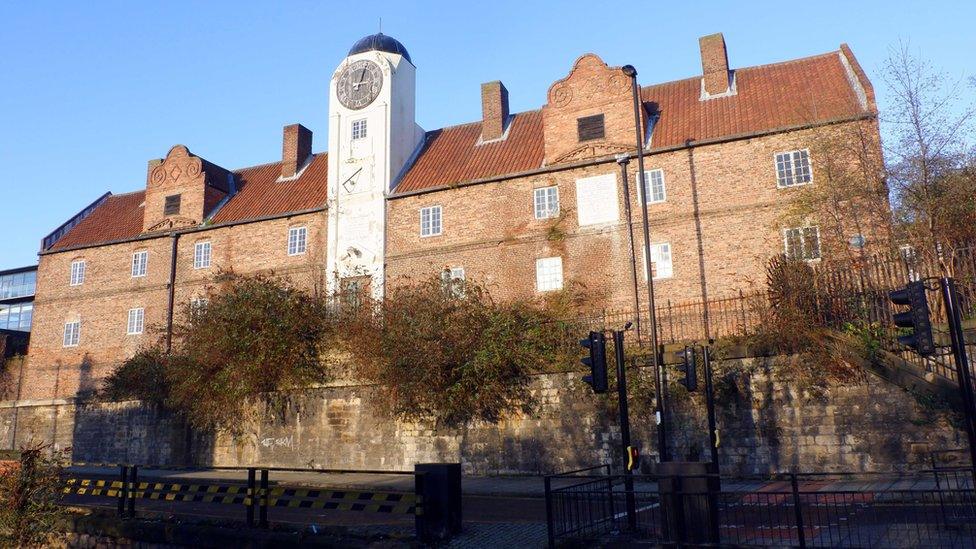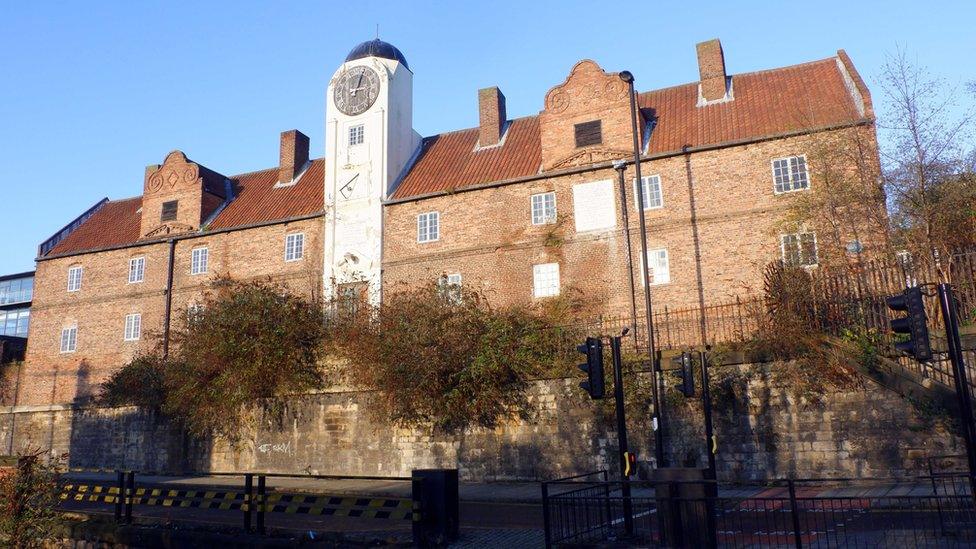New bid to save Newcastle's Keelmen's Hospital site
- Published

Now derelict, the former Keelmen's Hospital has overlooked the Quayside since 1701
A new effort is being launched to save one of Newcastle's most historic buildings.
The derelict Keelmen's Hospital was put up for sale by the city council three years ago with hopes it could be turned into homes or a hotel.
However, no buyer was found.
The council, the Tyne and Wear Building Preservation Trust and Historic England will now pay for a new study exploring how it could be turned into affordable housing.
The Grade II*-listed site, which is on Historic England's register of at-risk buildings, has overlooked the city's Quayside since the early 18th Century.
While it was most recently used as student accommodation, it has been empty since 2009.
It was originally an almshouse to care for sick and ageing keelmen, who used wooden boats to transport coal from the banks of the Tyne out to ships too large to travel up the river.
'Top of the list'
Trust manager Martin Hulse told the Local Democracy Reporting Service the property had "such importance to the industrial heritage of the city" but had been "forgotten".
He added: "I have been working for a couple of years with the council looking at heritage at risk across the city and this building is at the top of the list because of the risk and its significance."
The building was put up for sale in February 2021, marketed alongside the neighbouring Salvation Army Men's Palace, and the council later said there had been a "number of bids" to take over the site, though none came to fruition.
Mr Hulse said it "doesn't stack up" to redevelop the site commercially and so grant funding would be needed to secure its future.
City council leader Nick Kemp said the link-up with the trust brought "hope we can finally break the deadlock and bring the building back into use".
Maria Carballeira, of Historic England, said co-funding the study and providing technical advice was the "first important step" towards removing the building from the Heritage at Risk Register.
A previous feasibility study was launched in 2015 using a £10,000 grant from the Heritage Lottery Fund.
The council has not been able to confirm what the latest appraisal will cost.

Follow BBC Newcastle on Facebook, external, X (formerly Twitter), , externaland Instagram, external. Send your story ideas to northeastandcumbria@bbc.co.uk, external.
- Published24 February 2021
